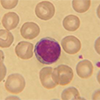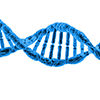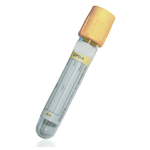
- Home
- Clinical Chemistry Tests
- Calcium (adjusted)
Calcium (adjusted)
Specimen Volume
5 mL bloodSample Preparation
Centrifuge
Turnaround Time
1 daySample Processing In Laboratory
Usual
Sample Stability
Usual.
General Information
Calcium ions affect the contractility of the heart and the skeletal musculature and are required for the normal functioning of the nervous system.
Approximately 99% of calcium in the body is stored in bones. Only around 1% of total body calcium is found in plasma. Around half of calcium in plasma exists in the ionised (active) form or is bound to proteins such as albumin (inactive). Total calcium in plasma is therefore affected by the amount of circulating albumin the blood. To account for these changes, an equation can be used to estimate what the total calcium would be if albumin was within reference range limits (usually taken to be 40 g/L).
Adjusted calcium results results are automatically calculated by the laboratory system using the following locally derived formula:
[ Adjusted Calcium] = [Total Calcium] + 0.016 (42 – [Albumin])
Note: Adjusted Calcium is not valid for paediatric patients or if acidosis or alkalosis is present. Hypocalcaemia presents itself as tetany and osteomalacia.
Hypercalcaemia is frequently due to an increased mobilisation of calcium from the skeleton and increased intestinal absorption.
Patient Preparation
None
Notes
Prolonged tourniquet use, administration of vitamin D or bendrofluazide can increase calcium concentration
EDTA or citrate contamination will decrease calcium concentration
Reference Range
Adult male/female reference range: 2.2-2.6 mmol/L
(Pathology Harmony)
Specifications
-
EQA Status:
NEQAS
- EQAS Scheme: Yes
Tags
Bone TestsRelated Tests
Albumin Calcium (Urine) Parathyroid Hormone (PTH) Phosphate (serum) Vitamin D (25-OH VitD)Creation Date
Monday, 08 August 2011Modification Date
Friday, 29 September 2023General Information
Location of Laboratories
Copyright UHB Pathology 2018
Protection of Personal Information – Clinical Laboratory Services comply with the Trust Data Protection Policy and have procedures in place to allow the Directorate and it’s employees to comply with the Data Protection Act 1998 and associated best practice and guidance.
University Hospitals Birmingham medical laboratories at Queen Elizabeth Hospital, Heartlands Hospital, Good Hope Hospital and Solihull Hospital are UKAS (United Kingdom Accreditation Service) accredited to the ISO 15189:2012 standard. For a list of accredited tests and other information please visit the UKAS website using the following link: https://www.ukas.com/find-an-organisation/
- Molecular Pathology is a UKAS accredited medical laboratory No. 8759
- Biochemistry is a UKAS accredited medical laboratory No. 8910
- Haematology and Transfusion is a UKAS accredited medical laboratory No. 8784
- Clinical Microbiology is a UKAS accredited medical laboratory No. 8760
- Cellular Pathology is a UKAS accredited medical laboratory No. 10141
- Musculoskeletal laboratory is a UKAS accredited medical laboratory No. 9897
- Heartlands, Good Hope and Solihull Hospital pathology laboratories are a UKAS accredited medical laboratory No.8217.
Tests not appearing on the UKAS Schedule of Accreditation currently remain outside of our scope of accreditation. However, these tests have been validated to the same high standard as accredited tests and are performed by the same trained and competent staff.
For further test information, please visit the test database: http://qehbpathology.uk/test-database
For further information contact Louise Fallon, Quality Manager, 0121 371 5962
 Biochemistry
Biochemistry Haematology and Transfusion
Haematology and Transfusion Clinical Microbiology (Including Virology)
Clinical Microbiology (Including Virology) Cellular Pathology
Cellular Pathology General Information
General Information Molecular Pathology
Molecular Pathology